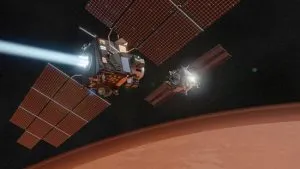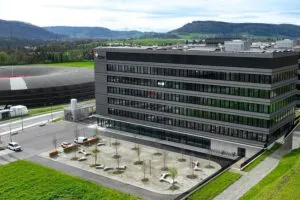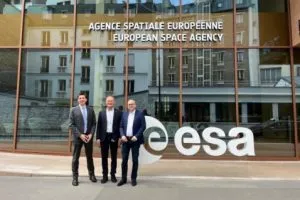
Additionally, four consortia will define what a small, low-cost Mars satellite-platform could look like as a “LightShip” passenger, i.e. the spacecraft platforms that could be delivered to Mars by the LightShip.
They are led by Argotec, Deimos Space, Politecnico di Milano with SITAEL, and Redwire. Funding for the study contract is through the Preparation element of ESA’s Basic Activities. And, with “LightShip” currently in the feasibility and definition stage, the studies will be carried out in parallel.
Note that the tug will also host the Mars Communication and Navigation Infrastructure (MARCONI), offering a dedicated data relay service.
LightShip
“ESA’s LightShip concept aims to open up access to Mars for a wider community than is usually the case,” explains Claire Parfitt, Mars Exploration Study Team Lead in ESA’s Directorate of Human and Robotic Exploration and technical officer of the activity.
“It’s very exciting for us to be able to provide this opportunity, since building spacecraft for Mars missions is usually considered a task for large system integrators. Our member states asked for a wider participation in the exploration domain, and we’re really glad to have been able to help facilitate that. Moreover, the nature of LightShip is such that it makes us open to international partnerships as well.”
The initiative represents an ESA return to small-scale missions aimed at exploring the Red Planet.
Redwire
For its part, Redwire highlighted smallsat innovation:
“This project will help us unlock new possibilities for small, cost-effective Mars platforms, pushing the boundaries of smallsat innovation while maintaining a clear focus on advancing humanity’s presence beyond Earth,” said Erik Masure, President of Redwire Space Europe. “Together, we are setting the stage for the next generation of space exploration.”
The work will be carried out by Redwire’s wholly-owned Belgian subsidiary, Redwire SpaceNV. Its proposal, says the company, will feature an adapted version of its existing small satellite platform, Hammerhead.
The company is working on other ESA projects such as Skimsat. This is a technology demonstrator for a small satellite platform designed to operate in very low Earth orbit.
There is also the International Berthing and Docking Mechanism for the lunar Gateway. The Hera mission to study the Didymos binary asteroid system, which also involved Hammerhead. And the Proba-3 mission, the first precision formation flying mission that will investigate the sun corona.
Image: ESA
See also: Redwire handed robotic arm prototype for the Argonaut lunar lander
 Electronics Weekly
Electronics Weekly



